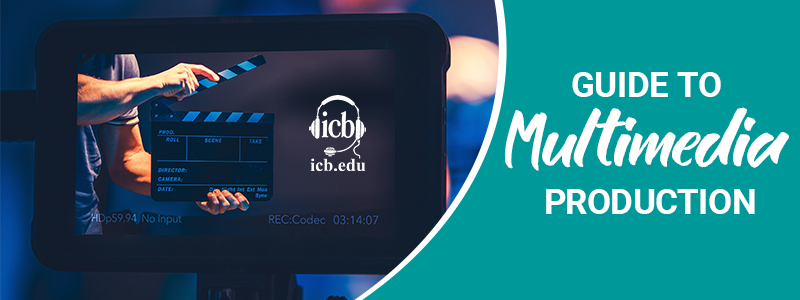
A Comprehensive Guide to Multimedia Production
Multimedia production, the process of creating content that uses multiple forms of media, is a great way to engage with audiences, communicate, connect, and tell stories. Multimedia production can be used for a wide range of purposes, including marketing, advertising, education, entertainment, and more.
If you’re interested in starting a career in this exciting field, check out the International College of Broadcasting (ICB) and their Multimedia Production & Broadcasting program. Whether you’re interested in a career in TV, film, video, or social media, our program will provide hands-on, in-studio training to shoot, produce, direct, edit and much more.
Here are some of the key steps involved in multimedia production, as well as tips and tricks for creating effective multimedia content.
Planning
Before starting any multimedia project, it is essential to make a detailed plan. Identify your target audience, define your goals and objectives, determine a scope of work, and develop a timeline. You should also consider which forms of media you will use, such as video, audio, graphics, text, and animation, and what steps will need to be taken to get you to the finished product.
Scriptwriting
Once you have a plan in place, start writing a script. A script is a written outline of the content you want to create, and includes all the dialogue, action, and visuals that will be used. When writing a script, it is important to target the message to your specific audience and their preferences.
Storyboarding
A storyboard is a visual representation of your script. It features a sequence of illustrations or images that show how the multimedia content will flow. Storyboarding is an essential step in the multimedia production process because it helps you to visualize your content and identify any potential issues before you start creating the final product.
Recording
After your storyboard is approved, it’s time to start recording the audio and video components of your multimedia project. This can involve using different types of lighting, cameras, microphones, and other equipment to capture the necessary footage. Ensure that you have high-quality equipment and that you record in a quiet and controlled environment to avoid any unwanted background noise. ICB can help you master the latest technologies and equipment in a professional studio environment so you’re ready for a real-world career.
Editing
Once you have recorded your audio and video components, it is time to start editing them together. This involves combining the different elements of your project, such as sound effects, music, and voiceovers, and creating a seamless final product. Editing software such as Adobe Premiere or Final Cut Pro can be used to create a polished and professional-looking multimedia project.
Publishing
Once your multimedia project is complete, it is time to publish it. This can involve uploading it to a website, social media platform, or video-hosting site such as YouTube or Vimeo. You should also consider promoting your multimedia content through email marketing, social media advertising, or other digital marketing channels.
Multimedia production is a complex and multi-faceted process that requires careful planning, attention to detail, and creativity. By following the steps outlined in this guide, you can create effective multimedia content that engages with your audience and achieves your goals. Whether you are creating marketing materials, educational resources, or entertainment content, multimedia production is a powerful tool that can help you to tell your story and share your message with the world.
Check out ICB
If you’re interested in pursuing an exciting and rewarding career as a multimedia professional – or even starting your own multimedia business, ICB can help you get there with our innovative Multimedia Production and Broadcasting program. To learn more, contact us or give us a call at 855-896-3733

